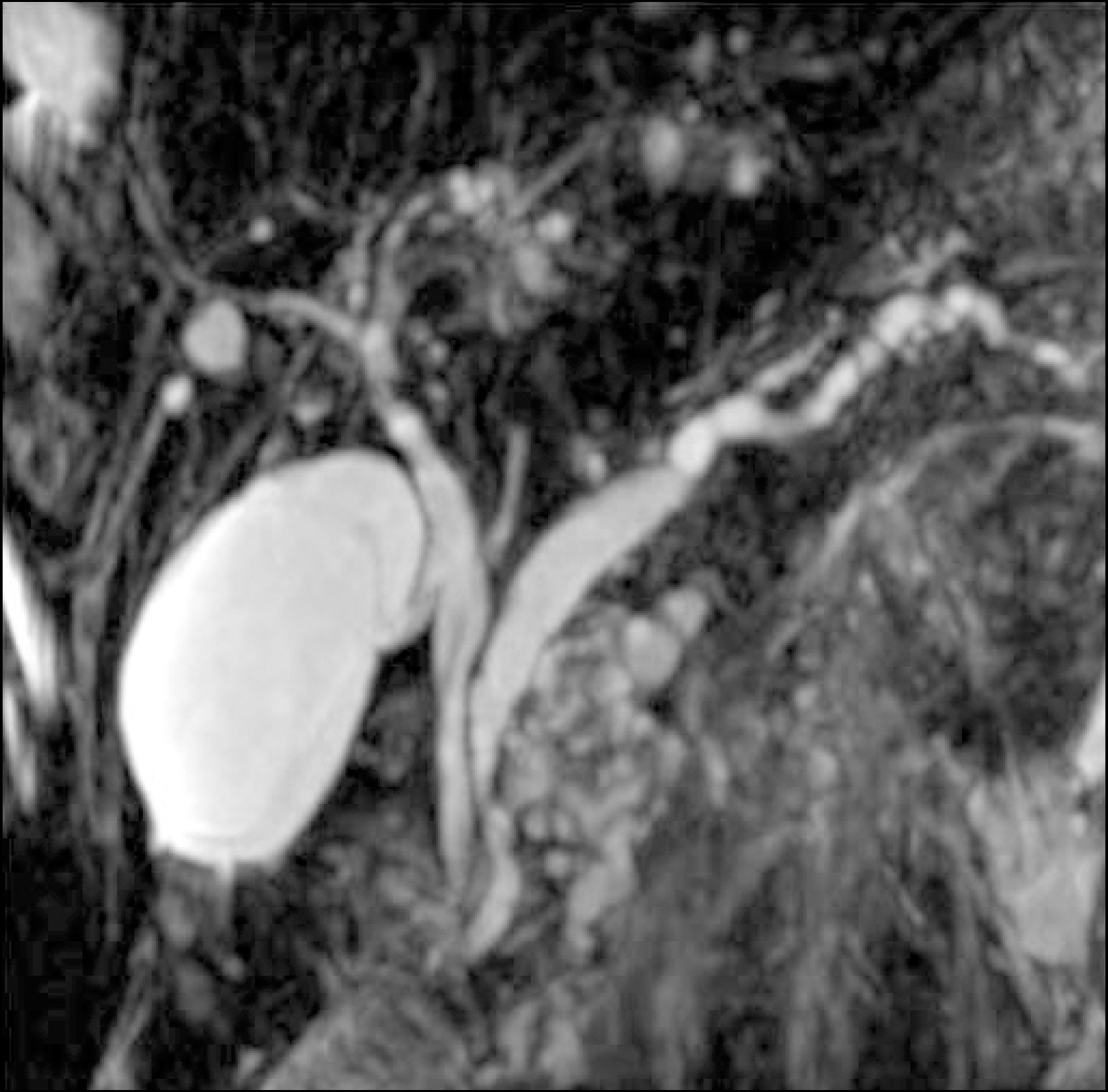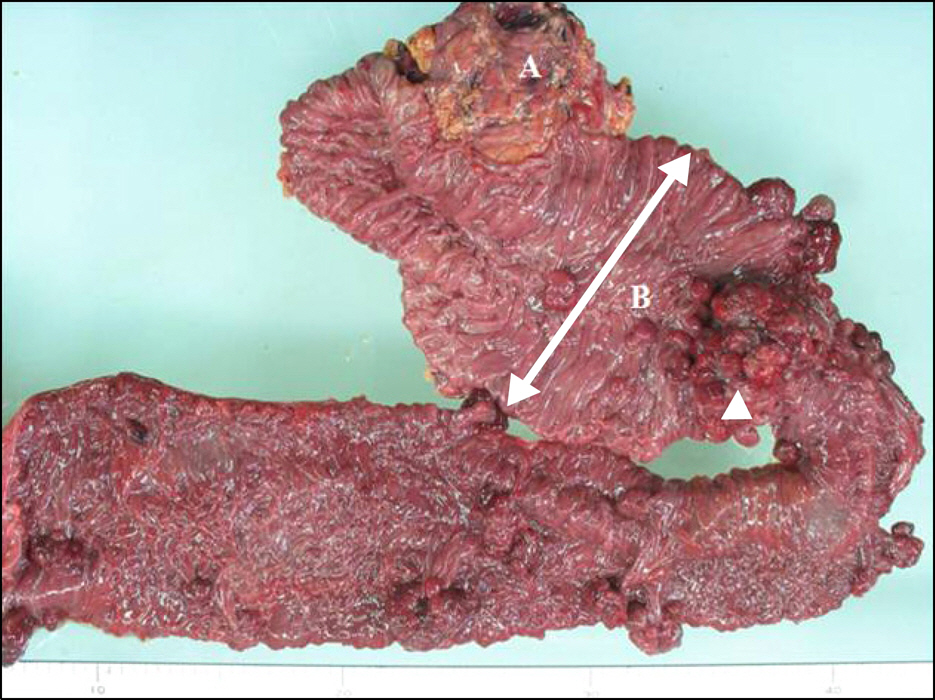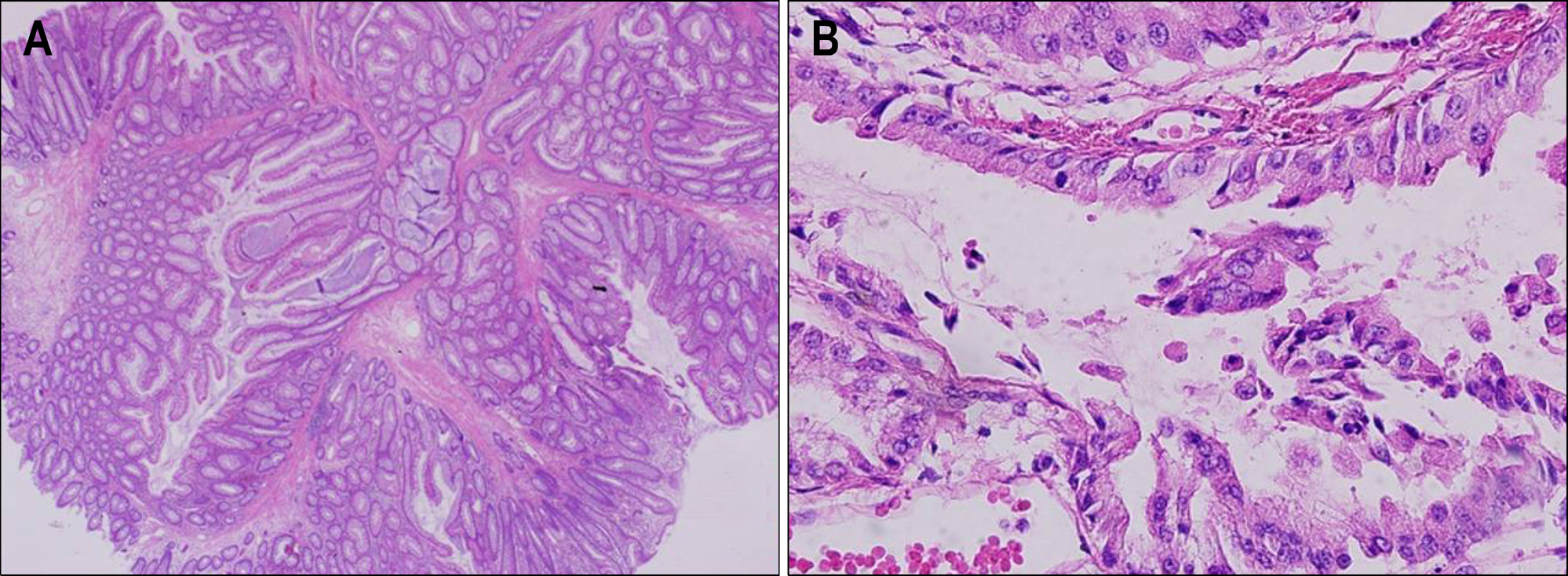Korean J Gastroenterol.
2010 Jan;55(1):73-77. 10.4166/kjg.2010.55.1.73.
A Case of Peutz-Jeghers Syndrome with Intraductal Papillary Mucinous Carcinoma of Pancreas
- Affiliations
-
- 1Department of Internal Medicine, Chungnam National University College of Medicine, Daejeon, Korea. jeonghy@cnuh.co.kr
- 2Department of Pathology, Chungnam National University College of Medicine, Daejeon, Korea.
- KMID: 1775930
- DOI: http://doi.org/10.4166/kjg.2010.55.1.73
Abstract
- Peutz-Jeghers syndrome (PJS), which is characterized by multiple hamartomatous polyps of the gastrointestinal tract and mucocutaneous pigmentation, is a rare autosomal dominant disease. This syndrome is often represented as a surgical emergency with complications of the polyps such as intussusception, small bowel obstruction, bleeding, and volvulus. In particular, many studies have reported that patients with this syndrome have a high risk of gastrointestinal or extragastrointestinal malignancy including gastric, duodenal, jejunal, ileal, and colonic carcinoma as well as malignancies involving other organs such as the gallbladder, biliary tract, pancreas, tonsils, breast, and reproductive system. However, there are few reported cases of an association of this syndrome with extraintestinal malignancy. In addition to that, there is no reported case of this syndrome with malignant tumor or intraductal papillary mucinous tumor of pancreas in Korea. We experienced a case of PJS accompanying intraductal papillary mucinous carcinoma of the pancreas, therefore we report this case with literatures reviewed.
MeSH Terms
Figure
Cited by 1 articles
-
Clinical, Endoscopic and Pathologic Findings of Colonic Polyposis in Korean Children
Mi Sun Lim, Jeong Kee Seo, Jae Sung Ko, Hye Ran Yang, Gyeong Hoon Kang, Woo Sun Kim
Korean J Pediatr Gastroenterol Nutr. 2010;13(2):154-163. doi: 10.5223/kjpgn.2010.13.2.154.
Reference
-
1. Spigelman AD, Arese P, Phillips RK. Polyposis: the Peutz-Jeghers syndrome. Br J Surg. 1995; 82:1311–1314.
Article2. Chang MS, Kim H, Kim WH, et al. Gastrointestinal polyposis in Koreans: a nationwide survey of clinicopathologic analysis of 112 surgically resected cases. Korean J Pathol. 1998; 32:404–412.3. Tomlinson IP, Houlston RS. Peutz-Jeghers syndrome. J Med Genet. 1997; 34:1007–1011.
Article4. Buck JL, Harned RK, Lichtenstein JE, Sobin LH. Peutz-Jeghers syndrome. Radiographics. 1992; 12:365–378.
Article5. Spigelman AD, Phillips RK. Management of Peutz-Jeghers paient. J R Soc Med. 1989; 82:681.6. Spigelman AD, Murday V, Phillips RK. Cancer and the Peutz-Jeghers syndrome. Gut. 1989; 30:1588–1590.
Article7. Song SH, Lee JK, Saw HS, et al. Peutz-Jeghers syndrome with multiple genital tract tumors and breast cancer: a case report with a review of literatures. J Korean Med Sci. 2006; 21:752–757.
Article8. Peutz JDA. Over een zeer Merkwaardige, gecombineerde fa-miliare polyposis van der de slimjmvliezen van den tracts intestinalis met die van de neuskeelholte en gepaard met ei-gennaardige pigmentaties van huid en slijmvlisen. Nedri Tijd-schr Geneeskd. 1921; 10:134–146.9. Jeghers H, Mckusick VA, Kata KH. Generalized intestinal polyposis and melanin spots of the oral mucosa, lips and digits. N Engl J Med. 1949; 241:1031–1036.
Article10. Bruwer A, Bargen JA, Kierland RR. Surface pigmentation and generalized intestinal polyposis (Peutz-Jeghers syndrome). Mayo Clin Proc. 1954; 29:168–174.11. Mcallister AJ, Richards KF. Peutz-Jeghers syndrome: experience with twenty patients in five Generations. Am J Surg. 1977; 134:717–720.12. Choi HS, Park YJ, Park JG. Peutz-Jeghers syndrome: a new understanding. J Korean Med Sci. 1999; 14:2–7.
Article13. Park KS, Jung BY, Cheong SK. A case of Peutz-Jegheres syndrome with intussusception after colonoscopy. Korean J Gastrointest Endosc. 1993; 25:676–680.14. Foley TR, McGarrity TJ, Abt AB. Peutz-Jeghers syndrome: a clinicopathologic survey of the “Harrisburg family” with a 49-year follow-up. Gastroenterology. 1998; 95:1535–1540.
Article15. Giardiello FM, Welsh SB, Hamilton SR, et al. Increased risk of cancer in Peutz-Jegher syndrome. N Engl J Med. 1987; 316:1511–1514.16. Niimi K, Tomoda H, Furusawa M, Hayashi I, Okumura Y. Peutz-Jeghers syndrome associated with adenocarcinoma of the cecum and focal carcinoma in hamartomatous polyps of the colon: a case report. Jpn J Surg. 1991; 21:220–223.17. Laughlin EH. Benign and malignant neoplasms in a family with Peutz-Jeghers syndrome: study of three generations. South Med J. 1991; 84:1205–1209.
Article18. Bowlby LS. Pancreatic adenocarcinoma in an adolescent male with Peutz-Jeghers syndrome. Hum Pathol. 1986; 17:97–99.
Article19. Lynch HT, Smyrk T, Kern SE, et al. Familial pancreatic cancer: a review. Semin Oncol. 1996; 23:251–275.20. Hemminki A, Markie D, Tomlinson I, Avizienyte E. A ser-ine/threonine kinase gene defective in Peutz-Jeghers syndrome. Nature. 1998; 391:184–187.
Article
- Full Text Links
- Actions
-
Cited
- CITED
-
- Close
- Share
- Similar articles
-
- Peutz-Jeghers syndrome: a new understanding
- Squamous cell carcinoma of the pancreas with a pancreatic intraductal papillary mucinous neoplasm: a case report
- A Case of Peutz-Jegher's Syndrome
- Peutz-Jeghers Syndrome with Recurrent Intussusception
- Gastrointestinal Cancers in a Peutz-Jeghers Syndrome Family: A Case Report





